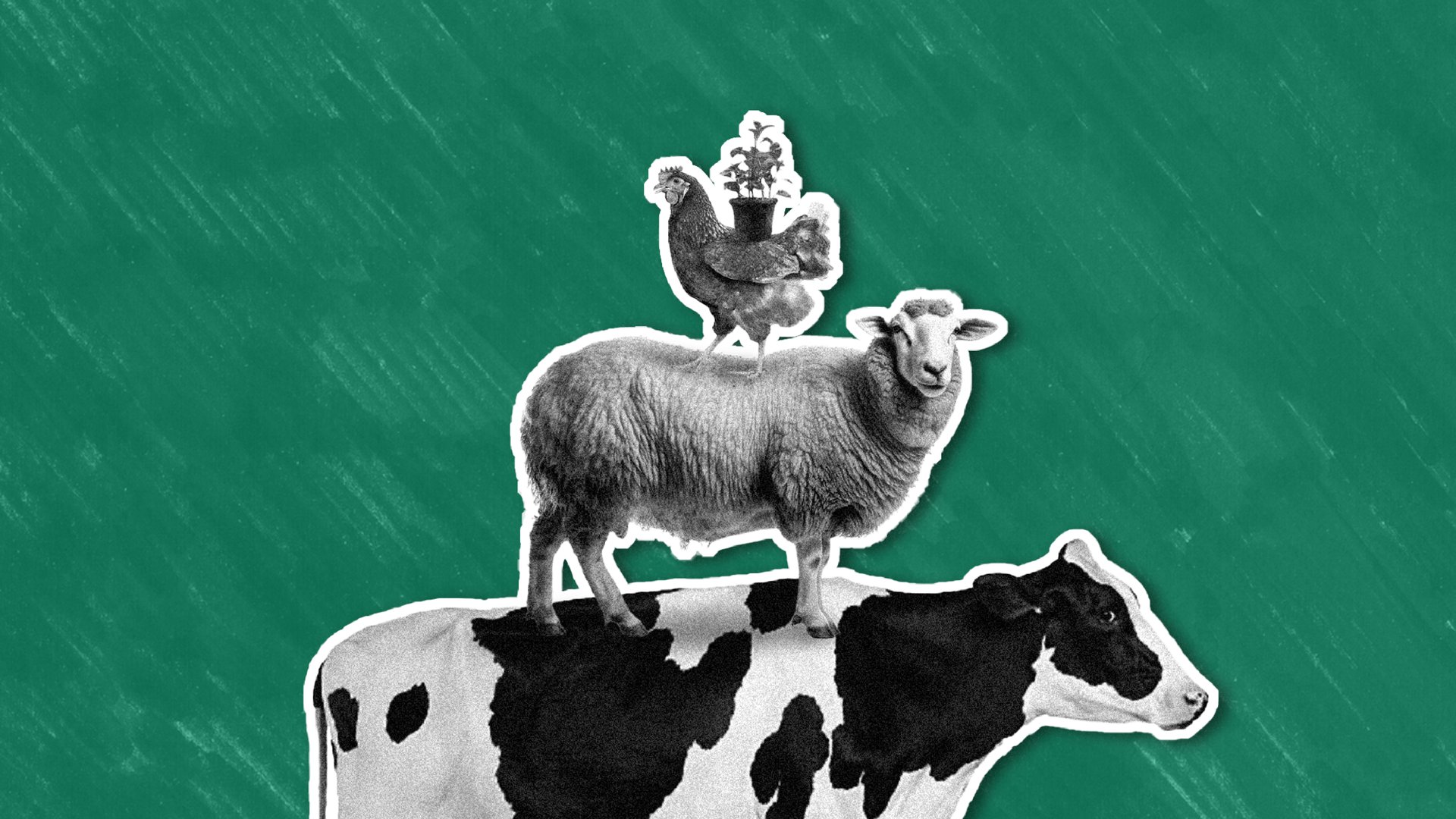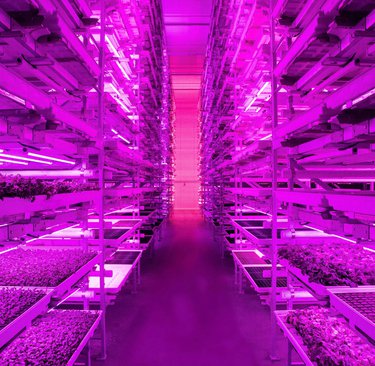The rise of vertical farms
An elegant solution to an international issue.
Posted 23.05.02
The food industry is strewn with negative connotations when it comes to the environment.
From packaging, to waste, high levels of water usage, travel costs and impacts on landscape and natural environment, there’s a lot to think about.
Of course, this is an absolutely essential industry, so when it comes to making it work in a more environmentally friendly way, innovation is a must.
So, when we heard about the rise of vertical farms making their way into the mainstream, like Marks and Spencers stores across London, our interest was piqued.
Utilising intelligent, thoughtful design to provide an elegant solution to this international issue is the stuff we live for here at Studio Unbound.
From packaging, to waste, high levels of water usage, travel costs and impacts on landscape and natural environment, there’s a lot to think about.
Of course, this is an absolutely essential industry, so when it comes to making it work in a more environmentally friendly way, innovation is a must.
So, when we heard about the rise of vertical farms making their way into the mainstream, like Marks and Spencers stores across London, our interest was piqued.
Utilising intelligent, thoughtful design to provide an elegant solution to this international issue is the stuff we live for here at Studio Unbound.
What are vertical farms
The key is in the name. A vertical farm is a structure where crops are grown on multiple levels stacked on top of each other.
What’s more, the vertical farms that are making their way into the popular UK supermarket chain are designed to create their own climate, providing the ideal conditions for herbs to grow in them, no matter the conditions in the outside world.
The ones you might spot popping up in M&S are design specifically to grow fresh herbs instore, so shoppers can enjoy fresh produce at all times.
What’s more, the vertical farms that are making their way into the popular UK supermarket chain are designed to create their own climate, providing the ideal conditions for herbs to grow in them, no matter the conditions in the outside world.
The ones you might spot popping up in M&S are design specifically to grow fresh herbs instore, so shoppers can enjoy fresh produce at all times.
What are the benefits of vertical farming?
Vertical farms, the superheroes of food production, are here to save the day! And boy, do they have some tricks up their sleeves to tackle those pesky issues we've been yapping about.
Fresh produce: Produce grown in vertical farms in the UK can go from farm to shelf in less than 24 hours. But wait, it gets even fresher! M&S vertical farms are sprouting herbs right there in the store, so you can pick 'em yourself. Talk about farm-to-fork freshness!
Land-saving: Land is like gold these days, and farming keeps munching away at it faster than a rabbit on steroids. Well, fear not, because vertical farms can save a staggering 95% of land when done right. Boom!
Water Savers: Traditional agriculture guzzles up 70% of the world's freshwater supply like a thirsty camel. But vertical farming has a secret weapon: a closed-loop irrigation system. It recycles the water that evaporates from the plants, slashing water usage by a jaw-dropping 95%.
Locally sourced: Who doesn't love a bit of local flair? With vertical farms, you get fresh produce grown close to home, reducing the need for food to travel long distances. That means a smaller carbon footprint.
Fresh produce: Produce grown in vertical farms in the UK can go from farm to shelf in less than 24 hours. But wait, it gets even fresher! M&S vertical farms are sprouting herbs right there in the store, so you can pick 'em yourself. Talk about farm-to-fork freshness!
Land-saving: Land is like gold these days, and farming keeps munching away at it faster than a rabbit on steroids. Well, fear not, because vertical farms can save a staggering 95% of land when done right. Boom!
Water Savers: Traditional agriculture guzzles up 70% of the world's freshwater supply like a thirsty camel. But vertical farming has a secret weapon: a closed-loop irrigation system. It recycles the water that evaporates from the plants, slashing water usage by a jaw-dropping 95%.
Locally sourced: Who doesn't love a bit of local flair? With vertical farms, you get fresh produce grown close to home, reducing the need for food to travel long distances. That means a smaller carbon footprint.
Seasons? What seasons? Say goodbye to unpredictable weather tantrums. Vertical farms have nifty climate machines that keep the conditions perfect for growth all year round. So, you can kiss goodbye to questions like "Will it be sunny today?" or "Is it the right season?" Fresh, tasty, and always in stock!
Packaging predicament solved: Forget those annoying plastic wrappings. In the land of vertical farms, everything is grown in-store, eliminating the need for excessive packaging.
Less chemicals used - yes you heard that right - because vertical farms are grown inside the need for pesticides and chemicals to keep insects at bay are reduced. Meaning the lovely wildlife outside can carry on living happily.
Vertical farms are rewriting the rules of farming, bringing fresh, sustainable, and downright tasty produce to our plates. Who knew farming could be this cool? Now, go forth and embrace the veggie revolution!
Packaging predicament solved: Forget those annoying plastic wrappings. In the land of vertical farms, everything is grown in-store, eliminating the need for excessive packaging.
Less chemicals used - yes you heard that right - because vertical farms are grown inside the need for pesticides and chemicals to keep insects at bay are reduced. Meaning the lovely wildlife outside can carry on living happily.
Vertical farms are rewriting the rules of farming, bringing fresh, sustainable, and downright tasty produce to our plates. Who knew farming could be this cool? Now, go forth and embrace the veggie revolution!
Are Vertical Farms the Future?
Oh, vertical farming, you ambitious and eco-friendly trendsetter! It's great to see big retailers like M&S stepping up and embracing sustainable produce. Kudos to them!
On the surface, vertical farming seems like the perfect solution to our global farming woes. It promises resilience in the face of a changing climate, tackles sustainability issues head-on, and is gaining popularity like a viral cat video.
But, let's not forget the elephant in the room: the cost. Keeping those climate control machines humming isn't cheap, and with electricity prices on the rise, it could put a dent in the viability of vertical farming on a larger scale. However there are big shifts in these farms looking at renewable energy to feed their crop so there is hope.
Can it happen? We're cautiously optimistic. The future of vertical farming has us intrigued, and we'll be keeping a close eye on the next steps. The future of farming is looking mighty interesting.
On the surface, vertical farming seems like the perfect solution to our global farming woes. It promises resilience in the face of a changing climate, tackles sustainability issues head-on, and is gaining popularity like a viral cat video.
But, let's not forget the elephant in the room: the cost. Keeping those climate control machines humming isn't cheap, and with electricity prices on the rise, it could put a dent in the viability of vertical farming on a larger scale. However there are big shifts in these farms looking at renewable energy to feed their crop so there is hope.
Can it happen? We're cautiously optimistic. The future of vertical farming has us intrigued, and we'll be keeping a close eye on the next steps. The future of farming is looking mighty interesting.


